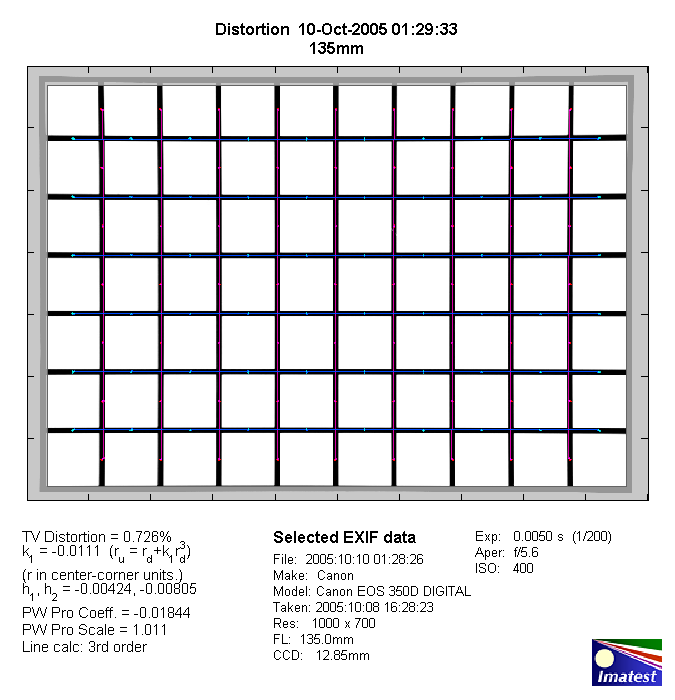|
Canon EF 28-135mm f/3.5-5.6 USM IS - Review / Test Report - Analysis |
|
Lens Reviews -
Canon EOS (APS-C)
|
|
Page 2 of 3

Distortion
The lens shows a medium degree of barrel distortion at 28mm changing to very slight pincushion
distortion towards the long end of the zoom range. Quite impressive for lens with a 5x zoom ratio.
28mm:

70mm:

135mm:

The chart above has a real-world size of about 120x80cm or 40x the focal length.
Expect more distortions towards closer focus distances.
Vignetting
Typical for full format lenses on APS-C DSLRs vignetting is no severe issue thanks to taking advantage
of the sweet spot of the lens. It's a little more pronounced at 28mm @ f/3.5 where it makes sense to
stop down a little but other than that there's little to worry about in the field.

MTF (resolution)
The lens showed a solid and even performance in the lab without any pronounced weaknesses.
During the film era there were some complaints about soft edges at 28mm at large aperture
settings but thanks to the sweet spot effect on APS-C the quality difference between center
and border is minor. The lens quality is best at 28mm where it reaches its performance peak
with an excellent center and very-good borders at f/5.6. At 70mm and 135mm the
quality is generally good to very good across the tested aperture range.
It is worth to mention that the tested sample had a slight decentering flaw visible at around 70mm -
not overly field relevant but visible in the lab.
Please note that the MTF results are not directly comparable across the different systems!
Below is a simplified summary of the formal findings. The chart shows line widths per picture height (LW/PH) which can be taken as a measure for sharpness.
If you want to know more about the MTF50 figures you may check out the corresponding Imatest Explanations
Chromatic Aberrations (CAs)
Chromatic aberrations (color shadows at harsh contrast transitions) are pretty acceptable
with an average pixel width of less than 1 pixel at the image borders.

|